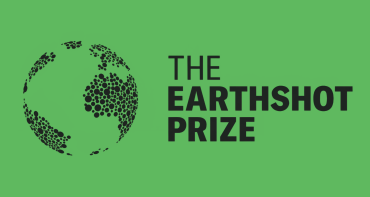The Commonwealth Blue Charter is highlighting case studies from the Commonwealth and beyond, as part of a series to spotlight best practice successes and experiences.

Share your own case study with us
âPart of why I think CLEAR is so good at what you would call gender equity is because everything we do, whether itâs taking out the trash or figuring out what metrics weâre going to use, we say, âHow can we do this with more humility? How can we do this more equitably? How can we do this with good land relations?â It [equity] is literally baked into everything.â
Max Liboiron, Director, Civic Laboratory for Environmental Action Research, Memorial University, Canada

Summary
The Civic Laboratory for Environmental Action Research (CLEAR)Âč at Memorial University, Canada, specialises in marine plastics and plastic pollution. The lab, directed by Max Liboiron, Associate Professor of Geography, is run on the principles of equity, justice and humility, and puts equity at the heart of all of its work. Since 2015, 76 per cent of CLEAR members have identified themselves as women, trans, non-binary and/or two-spirit.
CLEAR uses practices that make science more accessible. The lab co-designs research questions with communities, hires community co-researchers, and keeps the lab equipment in the communities. This empowerment within local communities has meant that, during the pandemic, CLEARâs Nunatsiavut plastic monitoring program has not been disrupted by quarantine measures, because locally based co-researchers continue monitoring in their âbackyardâ.
CLEAR also has a living document, the CLEAR Lab Book,ÂČ that lays out the labâs principles and protocols to support equitable work in the lab. For example, CLEAR includes procedures (facilitation, round robins, consensus-based decision-making, collaboration) for meetings to ensure that all lab members have opportunities to contribute. This allows lab members to develop the diverse range of skills needed to effectively implement these procedures throughout their careers.

CLEAR members Max Liboiron, Jessica Melvin and Melissa Novacefski gather cod samples at Petty Harbour, Newfoundland, Canada, during the recreational food fishery Photo credit: Bojan FuÌrst
Principles
The âleaky pipelineâ in science, technology, engineering and mathematics (STEM) fields refers to the fraction of women in sciences, globally, from bachelorâs graduates to researchers. In 2013, more women (53 per cent) than men graduated with STEM bachelorâs and masterâs degrees (but for PhDs male graduates (57 per cent) overtake women), yet women made up only 28 per cent of researchers globally â though this figure varies regionally. Therefore, the fraction of women graduating STEM programmes is not yet translating to equivalent representation at later career stages.Âł
At CLEAR, because of its core values, Liboiron reports that women and other underrepresented groups are staying in the STEM pipeline and flourishing. Liboiron explains the critical difference in CLEARâs principles between the concepts of equality and equity. âItâs equity, not equality, that is one of our ideas of justice, meaning that people in places and groups start in very uneven positions, and itâs those uneven positions you have to address. There are all sorts of things that intersect to give people privilege or oppression unevenly, even within an experience, or a group. Thereâs so much unevenness within those groups that makes it very complicated.â
Implementing equity: Results, accomplishments and outcomes

CLEAR members Coco Coyle, Emily Wells, Melissa Novacefski and Max Liboiron hold up three models of build-it-yourself surface water trawls during testing at Holyrood, Newfoundland, CanadaPhoto credit: David Howells, MEOPAR
Examples of how CLEAR leads with equity
Integrating equitable research practices at the community level
CLEARâs work predominantly involves the monitoring of plastics, particularly in food webs. It conducts beach and surface water surveys and analyses the gastro-intestinal tracts of fish and seabirds to assess plastic ingestion. The labâs work directly impacts and can inform communities, including related to the ingestion of plastics by marine animals destined for human consumption.
CLEAR begins a relationship with a community by co-creating research questions. It then has the community hire co-researchers (who are paid by CLEAR), and who bring their own knowledge and expertise. CLEAR supports the projects, and in so doing research equipment is provided to the community, and stays in perpetuity with the community. Once samples have been processed and data analysed, CLEAR begins a community peer review,⎠which involves the co-researchers presenting findings and seeking inputs about next steps in their own community. Key to the process is allowing the community control of the data and its use.
CLEAR and its community partnersâ mutual engagement supports capacity sharing, and impacts how research is conducted. Through these partnerships, CLEAR is also making ocean science and its outcomes more accessible to communities.
Equity in innovative ocean science instrumentation
The standard oceanographic instrument for sampling surface waters for microplastics is a manta trawl. The manta trawl is a net that is dragged through the water, collecting particles down to about 300 ÎŒm (300 microns). A manta trawlâs cost is around âŹ2,000. Instead of using a manta trawl, CLEAR set about inventing LADI (Low-tech Aquatic Debris Instrument), which Liboiron reports is equally effective. A LADI trawl can be constructed at home with local materials, and the design is open source and available on the CLEAR website,â” with instructions for use.
The cost is one-tenth that of a manta trawl. CLEAR has developed BabyLegs that costs less than one-tenth the cost of the LADI trawl, which can be made at home using another of CLEARâs open-source designs and is nearly as effective as either the LADI or the manta trawls.
More broadly, CLEAR aims to make ocean science more accessible and equitable, and hence increase opportunities for participation. This includes creating entirely new processes for marine science sampling. For example, CLEAR develops portable, inexpensive monitoring instruments that can be easily operated, and that can be repaired using local materials. Liboiron explains how sharing the research equipment CLEAR has developed leads to more equity in science: âWe invent monitoring instruments and we specifically design them for people who are systematically left out of instrument use because they donât have grants, they donât have labs, thereâs not two of them, their boat isnât big enough, etc. You can make almost all of our research tools in a garage. That means all sorts of people can do monitoring that couldnât before, and thatâs systemic.â
CLEARâs impacts
Since 2015, 76 per cent of CLEAR members have been women, transgender, non-binary and/or two-spirit. Over the same period, CLEAR has always had at least one Indigenous lab member: a protocol of the lab states that samples from Indigenous Lands, such as Nunatsiavut and NunatuKavut in Canadaâs north where CLEAR conducts sampling, are processed by people from those Lands.
Liboiron reports that CLEAR is changing who gets postgraduate degrees, that some Indigenous people who would not normally pursue postgraduate studies are completing them with CLEAR. Liboiron says, âWe launch more careers of a different type.â
Another impact of CLEAR is its effects on the communities it works with. Liboiron explains that having its protocols in place means its monitoring programmes have the potential to continue running over generations: âThere are people who are growing up with these monitoring programmes who will do it the rest of their lives, and their kidsâ lives, and their grandkidsâ lives. Itâs how you do longitudinal monitoring in the Arctic in particular.â
Key lessons learnt
When it comes to womenâs participation in CLEARâs work, the lab has not strived to be inclusive or welcoming. Rather, Liboiron explains, CLEARâs culture resonates with the values and experiences of women and members of other underrepresented groups. These are the people most likely to be part of CLEAR.
The culture of CLEAR and its methods directly reflect the experiences of the individuals who are part of the lab. CLEAR welcomes diversity, and is developing new modes of research because it welcomes diverse experiences and perspectives. It is thriving as a result, building more resilient long-term monitoring programmes across the Canadian province of Newfoundland and Labrador.
âThe main model of CLEAR, and I think the reason that weâre so successful, is that we always lead with our values. We never lead with the status quo or the way other labs do it or the way itâs been done before. Because those things will only reproduce the sort of invisible but underlying values of elitism or ideas that some knowledge counts and other knowledge doesnât. These things go unquestioned because theyâve become so normal, especially in science. As soon as you say, âThatâs not the thing weâre reproducing: weâre reproducing equity; weâre reproducing justice,â then you end up with different people doing different things with different results.â
Key contact
Max Liboiron, Associate Professor, Memorial University, Canada
Footnotes
- âThis estimate by the UNESCO Institute for Statistics for 137 countries excludes North America, owing to the international incomparability of these data. The global share of female researchers would not rise more than a few percentage points, however, even if the share of female researchers in the USA could be included in the calculation. Hypothetically, a 40% share of female researchers in the USA would push the global share up from 28.4% to 30.7%â (Huyer, S. (2015) âIs the Gender Gap Narrowing in Science and Engineering?â Chapter 3 in UNESCO (ed.) Science Report: Towards 2030. Paris: UNESCO, p.85, footnote 1).
Media contact
- Josephine Latu-Sanft Senior Communications Officer, Communications Division, °źÂț”ș
- +44 20 7747 6476 | E-mail


